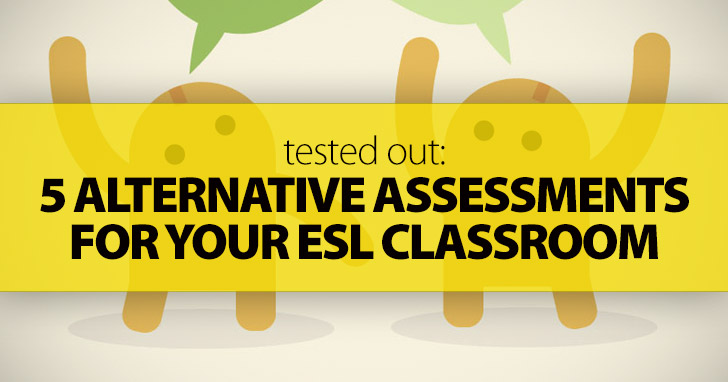What You Can Do With Comics: 10 Creative Activities


How can you get those low-performing students to show what they really know? Here are five alternative assessments that you can use in your classroom to help all students reach their potential.

When you are done with a unit on animals, for example, you can have your students make a diorama to demonstrate their understanding of the topic. A diorama is a shoebox filled with small figures and scenery representing what has been learned. If your students have studied the rainforest, they can make a scene using small trees and animals found in the rainforest. They can either make them out of paper or clay, or in some situations you may have supplies in your classroom. Then, depending on their level, they can present this to the class. A beginner can just point and label the different parts, and a more advanced student can explain the different parts and how they work together. Afterwards, students may ask questions of the student presenter if that is appropriate for their level. Displaying the dioramas for some time in the classroom can also foster more conversation among the students. Dioramas are a great, creative way for students to demonstrate their knowledge.
Some students may enjoy using a comic strip as a demonstration of their understanding. This works very well with a how-to or persuasive writing piece. It allows students to use their artistic skills along with a minimal amount of writing. Many students may already be familiar with a comic strip format which makes it even more user-friendly. Show the students some comic strips as examples, if possible. Explain that they will need to decide on their topic and plan out their strip, complete with drawings and speech bubbles. Provide them with a blank comic strip with four to six frames. Have them sketch it out on that first one. After you have reviewed their sketch and speech bubbles, they may make a final draft on a new comic strip. They may present it to the class. This activity can be used to demonstrate knowledge of specific content, such as a time in history, or to demonstrate understanding of a specific verb tense. The possibilities are endless with this assessment.
Some students may have some reading, writing, and even computer skills, but may still lack in speaking ability. These students may like to prepare a brochure to demonstrate what they have learned. Make sure they understand that a brochure is usually used to sell a product, so they will be “selling” whatever they have learned to the class. If they have access to computers at school, they may even be able to make the brochure there. You should give clear instructions as to how much information and how many pictures you would like for each section. You definitely should provide a good example of what you would like the brochure to look like. If they prefer to do it by hand, drawing on the page and writing it would be fine as well. Once they have completed the brochure, you have the option of having them just hand it in for a grade, having them read it to the class, or reading it to the class yourself in order to share some information. A brochure is a great way for students to communicate their understanding to you.
A fun way to assess students on a topic for which they can choose sides is to have a debate. This would be appropriate for students who already have some speaking skills. Your topic would need to be something that is arguable, such as whether there should be school uniforms in public school. If you are studying present tense or adjectives, for example, you can tell your students that you want them to use a certain amount of them in their argument. You may either let each student choose their side of the argument, or assign sides. If you allow them to choose, make sure that the sides are fairly even. Allow them to debate each other respectfully. Many students thrive when they feel there is some competition involved, and this may just do the trick. Having a debate in class is a fun way for students to demonstrate their knowledge.
Another fun way for students to show what they have learned is to act it out for the class. This can definitely work for any ability. If your students are beginners, they can act out their vocabulary words. This can be played as a game of charades, as one group of students selects a vocabulary word, and then silently acts it out, which gives the other team a chance to guess the word in the target language. Another opportunity would be for more advanced students to create a skit about the topic they have studied in the target language, such as an historical event. This would give them some reading and writing practice as they create the skit and then some speaking practice as they act it out. Many students enjoy acting as a way to show what they have learned.
For many, it gives them a chance to show their strengths. Using alternative assessments also lowers anxiety for many students who worry about their performance excessively. These creative outlets or being able to prepare their information ahead of time helps those students. They give our students a chance to reach their potential. Of course, in every classroom, there will be a time where pencil-and-paper tests have their place and will have to be used. It is refreshing to know that when we are not required to use them, we have these alternative assessments at our fingertips.